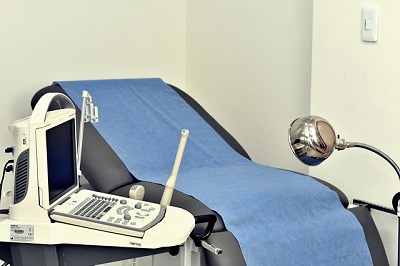How Can The Uterus Enlarge While Not Pregnant?
For women, the uterus is a vital reproductive organ. Usually, the size of the uterus remains relatively stable within a specific range. However, sometimes, there is a situation where the uterus enlarges even though there is no pregnancy, which can be confusing and concerning.

So, what are the causes of this phenomenon?
Firstly, uterine fibroids are one of the common causes. Uterine fibroids are benign tumors formed by uterine smooth muscle tissue proliferation. These fibroids can exist singly or multiple at the same time. As the fibroids gradually enlarge, they can lead to an increase in the volume of the uterus. The fibroids' size, number, and location vary, affecting the uterus differently.
Some women may have no apparent symptoms and only discover it by chance during a check-up. In contrast, others may experience menstrual irregularities, such as heavy menstruation, prolonged periods, or symptoms like lower abdominal distension and pain.
Adenomyosis is also an essential factor contributing to uterine enlargement. This is a disease in which the endometrial glands and stroma invade the uterine muscle layer. The ectopic endometrium grows diffusely within the uterine muscle layer, leading to a uniform enlargement of the uterus or the formation of localized nodules.
The main symptoms of adenomyosis include progressively worsening dysmenorrhea, increased menstrual flow, and uterine enlargement.
Endometrial cancer can also cause uterine enlargement. This malignant tumor leads to abnormal proliferation of the endometrium, expanding the uterine cavity and thereby increasing the volume of the uterus.
Early endometrial cancer may not have apparent symptoms, but as the disease progresses, symptoms such as irregular vaginal bleeding, vaginal discharge, and lower abdominal pain may occur.
Additionally, chronic inflammation of the uterus over a long period can also lead to uterine enlargement. For example, chronic pelvic inflammatory disease can cause the fibrous tissue within the uterine muscle layer to increase, making the uterus enlarged. Patients may experience lower abdominal pain, lumbosacral soreness, and increased vaginal discharge.
If there are uterine malformations, such as a double uterus or a septate uterus, uterine enlargement may also occur. This is due to congenital developmental abnormalities of the uterus, resulting in a shape and structure that differ from a normal uterus.
Another situation is ovarian dysfunction. Excessive estrogen secretion in the body continuously stimulates the uterus, causing the uterine muscle layer to thicken and the uterus to enlarge. This condition may be related to endocrine disorders or ovarian tumors.
In addition to the mentioned factors, some lifestyle habits may indirectly affect uterine size. For example, long-term use of medications or health products containing estrogen can disrupt the hormonal balance in the body, leading to uterine enlargement.
What should be done when uterine enlargement is discovered?
First, do not panic. Go to the hospital promptly, where the doctor will perform detailed examinations based on the specific situation, such as gynecological ultrasound, hysteroscopy, diagnostic curettage, and tumor marker tests to determine the cause of the uterine enlargement.
If fibroids cause uterine enlargement, the treatment must be decided based on the size of the fibroids, symptoms, patient's age, and fertility needs. Regular follow-ups are sufficient for smaller, asymptomatic fibroids; surgical treatment such as myomectomy or hysterectomy may be necessary for more significant or symptomatic fibroids.
Treatment methods for adenomyosis include conservative and surgical treatments. Conservative treatments, such as the Fuyan Pill, mainly aim to relieve symptoms and control disease progression.
Surgical treatment is suitable for patients with severe symptoms. Uterine artery embolization is ideal for patients who need to preserve the uterus.
For endometrial cancer, once diagnosed, a combination of surgery, radiotherapy, and chemotherapy is usually required to improve cure rates and survival rates.
If the enlargement is caused by uterine inflammation, active anti-inflammatory treatment is needed to eliminate the inflammation and prevent further disease progression.
For uterine enlargement caused by ovarian dysfunction, endocrine adjustment is needed, along with treatment of the primary ovarian disease.
In conclusion, although not pregnant, uterine enlargement can be a manifestation of various diseases. Timely medical consultation, accurate diagnosis, and targeted treatment measures are crucial for maintaining women's reproductive health.
You may also be interested in:
Uterine Enlargement with Adenomyosis: The Silent Disease Women Experience
What To Do If Adenomyosis Causes Enlarged Uterus?
Four common causes of an enlarged uterus
Christmas Special Offer for Fuyan Pill - Nurturing Women's Health, Let Love and Care Blossom!
previous pageChristmas 10% Off – Fuyan Pill for Women's Health with Natural Chinese Herbal Care
next page- Herbal Treatment for Adenomyosis with Large Uterine Enlargement and Heavy Bleeding
- How Reliable Is Uterus-Preserving Surgery for Adenomyosis?
- How Can The Uterus Enlarge While Not Pregnant?
- Can Sexual Life Be Continued After Hysterectomy?
- Women Health: Know Your Uterus Health Status From The First Morning Urine
Testimonials
- Adenomyosis with Ureaplasma Urealyticum Cured by Fuyan Pill
- Tubal blockage with hydrosalpinx can be cured by TCM shortly
- Fuyan Pill Helps A woman with Adenomyosis Get Pregnant
- A Woman with Hydrosalpinx Is Cured with Fuyan pill
- Pelvic Inflammatory Disease Testimonials
- Irregular Vaginal Bleeding and Endometrial Thickening Cured by Fuyan Pill
- Pruritus Vulvae and Frequent Urination: Mycoplasma Infection Cured after 2 Courses



